James Joyce and Dublin
by Michael Patrick O'Leary
This article appeared in the October 2013 edition of Echelon magazine.
What would James Joyce think of Dublin in 2013? Since Joyce left, Dublin has experienced grinding poverty, revolution, boom and bust.
Can it be reconstructed?
James Joyce’s Ulysses, published in 1922, covers eighteen hours in Dublin on June 16, 1904. Joyce left Dublin in 1907 and only returned three times – once to establish Ireland’s first cinema, another time to import tweed. He boasted to a friend that if the city were to disappear from the earth, his book could be used to reconstruct it. He designed the novel from information contained in Thom’s Directory of the United Kingdom of Great Britain and Ireland – Dublin Edition 1904. He plotted his characters’ movements using maps, a compass, a setsquare and a timepiece. He quizzed visitors from Ireland about current life in Dublin.
Joyce chose June 16, 1904, as it was the day of his first date with his wife-to-be, Nora Barnacle. Bloomsday is now a Dublin tourist attraction each year on June 16, when people follow the peregrinations of Leopold Bloom around Dublin from and to his home at No 7 Eccles Street. Joyce gives mythic significance to the wanderings of one modest man of Hungarian Jewish origin by using the framework of Homer’s Odyssey.
Joyce joked that his book would keep the professors busy for a century. How many thousands of academics prosper by analysing and explaining Joyce’s works? Many who have never read a word he wrote make a living off him. Ireland and Dublin shunned the man for decades but now he is a money-spinner. Even Tesco sells Joyce merchandise.
Joyce wrote one play, Exiles, which came after Dubliners and Portrait of the Artist as a Young Man and before Ulysses. Richard Rowan in Exiles says: “If Ireland is to become a new Ireland she must first become European”. Europe served Ireland well but now he nation is in thrall to the EU and people are protesting in the streets against austerity. Last year, 89,000 people became exiles.
I witnessed, over many decades, grinding poverty in Ireland. I visited Dublin in the 1980s on business and it had improved since my previous visit in the 1960s, when the city had the dank and depressed air of a Dubliners story. Decent accommodation and good food was available by the 80s. Despite relative prosperity, there was a big problem with heroin addiction among the young and criminal networks were thriving. Two men on a motorcycle shot investigative journalist, Victoria Guerin, six times, when her writing exposed gangster John Gilligan and his IRA associates.
The Nighttown episode in Ulysses is set in Dublin’s red light district – The Monto. The area around Montgomery Street had been a fashionable one until the mid 19th century when the licentious soldiery took over and hordes of women flocked in to service them. At one time more than 2,000 prostitutes, among them Julia Hooligan, May Oblong and Mrs Lawless plied their trade and the Monto became the worst slum in Europe. .Joyce himself lost his virginity when he was 14 to a prostitute against a tree. When the municipality wanted to clear the area of vice it planned to cut down the trees. Senator Oliver St John Gogarty (the model for both Buck Mulligan and Blazes Boylan in Ulysses) argued that the trees were more sinned against than sinning. The church and state closed down organised prostitution in the 1920s, but during Ireland’s economic boom demand increased. By the late 1990s, brothels had returned and made their owners rich. Ruhama, an organization opposed to prostitution, reported to the government in 2006 claiming that over 200 women were trafficked into Ireland. The police launched Operation Quest in 2003, followed by Operation Hotel in 2005, with the aim of tackling the trafficking of females from Eastern Europe.
In the early 90s, prosperity seemed permanent. I stayed in a hotel in Parnell Square (named after Ireland’s Lost Leader who features in Dubliners and Portrait as well as in Ulysses). The hotel was not far from Eccles Street but Bloom’s house no longer stands. By the time I went to live in Ireland in 1998, the bling years had arrived. There was once a rumour that Jack Nicholson was buying a Dublin Georgian house for six million euro. We found Ireland to be a vibrant modern European nation with a high proportion of young people. The influence of the church was waning. It was fashionable to be Irish. Dublin jackeen Paul Hewson (better known as Bono) advised presidents and popes about poverty.
However, corruption Irish-style was in evidence. This involved crony relationships between property developers, planning authorities and local and national politicians up to prime minister level. Why were developers building so many houses when the population was less than four million? Today, there are empty houses all over the country but homelessness is out of control.
Many of Dublin’s sex workers also have drug problems. There are an estimated 20,000 heroin addicts in Ireland, with 10,000 men and women on a methadone programme. Last year, a charity for drug abusers served 76,500 hot meals to homeless people in Dublin. Ireland ranks fourth highest in the EU in terms of death by suicide among young people.
Today, in downturn Dublin, Joyce is a money-making opportunity. The leisure industry organises walking tours of the pubs in Ulysses. Most of the pubs where the characters in Dubliners and Ulysses drank are still there –O’Neill’s in Suffolk Street, The Oval in Middle Abbey Street, Mulligan’s in Poolbeg Street. The Bailey on Duke Street used to display the front door of Bloom’s home at No. 7 Eccles Street. An establishment called the Bailey Bar and Tavern still operates but Joyce would not recognise it.
Davy Byrne’s pub, also on Duke Street, is the setting for the Lestrygonians episode of Ulysses. The pub is still there and offers a Bloomsday Special of gorgonzola and Burgundy, Bloom’s snack in the book. Bloom crossed the river to the Ormond Hotel, where the delightful Misses Kennedy and Douce were behind the bar. The Ormond is now closed and owned by 49-year-old Malaysian entrepreneur and QPR boss, Tony Fernandes, who is GCEO of AirAsia (described as the Michael O’Leary of Asia). Dubliners are objecting to a proposal to replace the Ormond with a six-storey hotel.
The Irish state has finally accepted Joyce as a national treasure. His image appeared on the ten Punt banknote from 1993 to 1999. On April 11 2013, ten thousand ten euro commemorative coins went on sale at the Irish Central Bank for 46 euros each. The coin features Joyce’s face and a quotation. Unfortunately, the quotation is incorrect which increased the value to 160 euro.
Dublin’s tourism industry relies heavily on its built heritage. There are 9000 structures in Dublin listed for protection. There are currently seven Architectural Conservation Areas in Dublin city. The designation of Dublin as a UNESCO City of Literature was a formal recognition of its international literary significance, as is the placing of Dublin on the tentative World Heritage Site list in 2010.
A recent comprehensive assessment of traffic in Dublin city centre by the National Transport Authority portrays a shambles of congestion and cluttered footpaths that would have impeded the wanderings of Bloom. The NTA recommends pedestrianised areas. The draft Dublin City Development 2011 – 2017 proposes the development of the city based on a long-term vision that Dublin by 2030 will be one of the most sustainable, dynamic and resourceful city regions in Europe.
The economic crisis may be part of the reason that Dublin now respects Joyce. There is a reaction against the crass consumerism of the Celtic Tiger years. Dubliners are trying to reclaim their city from the fraudsters. Before the boom, the cobblestoned Temple Bar quarter was a derelict maze. The 1991 commissioning of the architects’ co-operative, Group 91, to help refurbish Temple Bar contributed to the city’s previous cultural and economic renaissance. Mammon failed Dublin. Culture is what Dublin now has instead of religion. Optimists believe the city’s stagnation – coupled with its relatively small scale – is opening the door for creativity. Culture is the only thing that can save it.
Joyce can help.

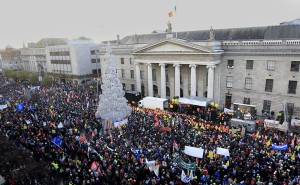
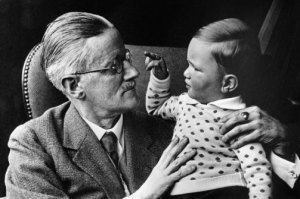
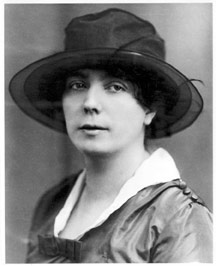
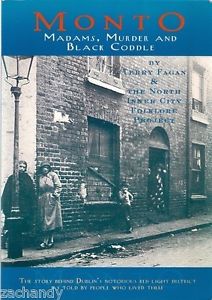
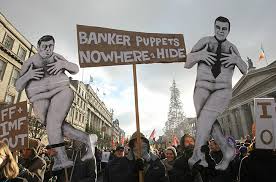
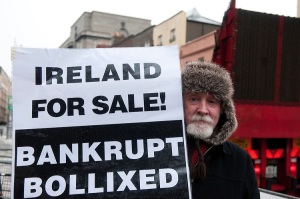
Thoroughly enjoyable piece.Great insight into the past and the present.Always enjoy reading Irish Authors.Many Thanks.Regards..
LikeLike
Thank you Rohan. I am grateful to my far-sighted editor at Echelon, Shamindra Kulamannage, who suggested the topic. Not many editors of business magazines would be so imaginative.
You can find other articles about Irish literature here:
More to come, i hope.
LikeLike
I’ve only visited Dublin once, when I was a young man during the ’60s, and as you say it was a fairly dismal place at the time. One outcome of that visit was an inclination to read Joyce. I’d previously tried ‘Ulysses’ and given up on it, but now – having read ‘Dubliners’ and loved the stories – I returned to the novel with real appreciation. (I never could cope with ‘Finnegan’s Wake’, though – I’ve still only read fragments of it.) It’s gratifying to learn from your article that Joyce has become so important to modern Irish (specifically) Dublin culture and economics. He was a very great writer.
Of course your focus is specifically on one country and one city – and much credit to your editor for encouraging you to write this piece – but a lot of what you say about corruption and commercialism applies to other European countries as well. In particular, several parts of your article could have been about the UK and would have been just as true. Alas, Britain hasn’t substituted culture for religion; she hasn’t substituted anything for religion except more and more commercialism.
LikeLike